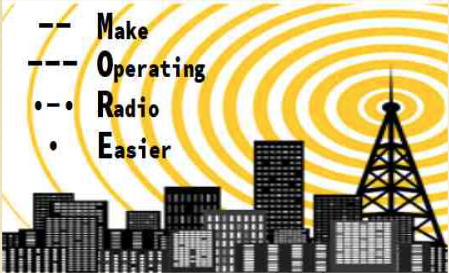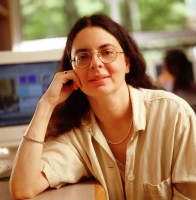Late last year I saw a post calling for individuals to sign up for a class to become an Amateur Radio operator. In the back of my mind flashed the opening scenes of Contact starring Jodie Foster. Long story short, I signed up. The Make Amateur Radio Easier (MORE) Project was started by Dr. Rebecca Mercuri for Amateur Radio outreach in order to attract underrepresented demographics of radio operators and is backed by Amateur Radio Digital Communications and by the Institute of Electrical and Electronics Engineers (IEEE). Through MORE I and my classmates will receive a hand-held 2-way radio, training, and pass the Technician exam (fingers crossed) to be able to Get On The Air (GOTA).
Amateur Radio, or Ham as it is affectionately known, is communication by radio waves for non-commercial purposes. Radio operators use frequencies within a designated band to broadcast text, data, voice, and even images. They identify themselves with callsigns, a combination of letters and numbers assigned by their home country’s broadcast governing body. While their host country is in charge of licensing, a radio operator with the right radio and antenna can broadcast all over the world. Referencing Jodie Foster’s character in Contact again: she contacts Australia from her midwestern home, and later is part of the search for extraterrestrial life.
Shortly after the advent of telegraphy, amateurs began broadcasting. Women were there too in the earliest days of radio as landline telegraph operators circa 1840s. As maritime radio gained steam, cultural ideas about the fragility of women in emergency situations led to the ousting of women from professions in telecommunications. When the rise of amateur radio occurred in the beginning of the twentieth century, the hobby attracted fans indiscriminately. Mrs. M.J. Glass and Olive Hearberg were two of the first women to the hobby, registering in the 1910s. In the lingo of Ham Radio, male operators called each other “OM” or “old man” in addition to their call signs. Starting in the 1920s women used “YL” or “young lady.” Young Ladies Radio League (YLRL) was founded in 1939 by Ethel Smith after seeing an ad in the membership journal of the National Association for Amateur Radio. She became curious about how many women were Hams and wanted to reach out to them. After writing a letter of her own to the journal, she created the YLRL that exists to this day offering scholarships and networking opportunities of all kinds.
Owning an amateur radio involves more than just knowledge of antenna and equipment, there is a whole language and etiquette involved. Morse code no longer is required for United States licenses, however, there are many Hams that still use it. The International Phonetic Alphabet is useful for intelligibility, especially when many phrases are shortened to acronyms. In turn, the acronyms are useful when a broadcast signal is full of distortion. Often local Ham radio clubs offer mentorships to encourage new Hams to keep broadcasting. Other advantages of clubs include access to more advanced equipment and opportunities to broadcast from unique locations like lighthouses.
I am excited to participate in the MORE course and find another way to marry my electrical and audio worlds. To be fair, I am also excited to emulate Jodie Foster in some way. Well, I need to jump off to study for my Technician exam, wish me luck. I don’t have a call sign yet, so this is Nicole, final clear.
For MORE information: n2re.org/m-o-r-e-project
Dr. Rebecca Mercuri, Grant Administrator, rtmercuri@ieee.org
Dr. Rebecca Mercuri interviewed by SoundGirls here: https://www.youtube.com/watch?v=VAOEL-VR6yc
Website for Young Ladies Radio League: https://ylrl.net/

